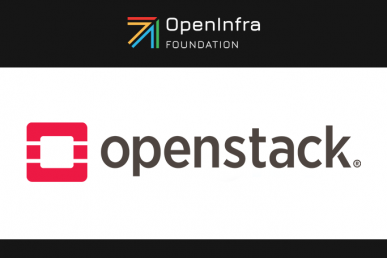For enterprise users, the journey to OpenStack deployment is fueled by the business opportunity of what lies ahead. IT systems were previously misunderstood as a crutch of sorts — something that plays a backseat role to the overlying business activities. However, with today’s emphasis on the cloud and particularly the opportunity with OpenStack, IT’s role has shifted into a driver of business outcomes — largely due to its ability to expedite business processes with an efficient foundation upon which business can thrive. Executives at the top understand that the future of IT is cloud-based and express the urgency to build a cloud that will scale to support growing customer demands.
With an improved underlying infrastructure layer, IT bottlenecks are thing of the past and positive ripple effects are felt across the organization. Suddenly, developers have self-service, on-demand access to compute, network and storage resources. They no longer have to rely on the central IT team to help facilitate their progress, allowing the organization to be faster to market and positioned more competitively.
OpenStack provides freedom from vendor lock-in and elasticity of clouds — both are imperatives when planning for long-term success. This innovative
oundation allows organizations to disrupt business as usual, shorten their time to market and ultimately create a unique cloud environment that addressees their specific business needs. What is exciting is how impactful and streamlined this shift to OpenStack can be. Whether it saves enterprises time or money, they are now able to rededicate resources towards core business functions.
As you start your OpenStack journey, it’s important to remember the bright future that lies ahead of this transformative foundation tailored to your business needs. Each OpenStack deployment takes different tracks to get there, but ultimately, organizations reach the same desired outcome.
Questions to start planning your OpenStack deployment
- Will you partner with a vendor-managed distributor (Red Hat, SUSE, Canonical, Mirantis, Upstream)?
- Will you deploy KVM or on a proprietary hypervisor?
- Which release and projects will you adopt?
- On what proportion of your infrastructure will you implement and what is your rollout strategy?
What type of organization should you partner with?
When deploying OpenStack, you can select a prepackaged distribution or you can take the DIY approach and build it from scratch. Although you may be quick to take the DIY approach to save costs, it is important to note that partnering with a distributor can ultimately save 45 percent of engineering costs. Getting support from a systems integrator or distributor is extremely valuable in setting up your journey for success. This partner will help you avoid bottlenecks and general confusion as you too are familiarizing yourself with OpenStack.
Deciding on a distribution partner for your OpenStack deployment is an important decision: you need specific skill requirements as well as emotional ones. It is worth taking the time to do thorough research to evaluate the technical capabilities of each OpenStack distribution. The systems integrator or distributor you choose will become an extension of your team, working closely with you to build and implement OpenStack in your organization. As you anticipate this journey, it’s important to highlight the areas that you can delegate work or streamline processes to make the adoption easier for everyone. This will proactively alleviate the challenges that may be ahead.
Top OpenStack purchasing factors
- Price
- Long-term support: you’ll want to work with companies that will be around for the foreseeable future to ensure that you have a steady partner in your journey
- Existing relationship: consider partners you already have in place if you’re currently working with a systems integrator. Additionally, evaluate distributions that are offering OpenStack, as well as options for using proprietary software.
- Reputation in community: many desire to use vendors that are involved in the OpenStack community and contributing code
- One-stop shopping
Taking the first step
There’s no perfectly defined path to deploy OpenStack in your organization. It’s a creative process that’s different for each organization. There are many reasons why organizations adopt OpenStack and even more guiding principles that influence a company’s OpenStack deployment. With preparation, creativity and flexibility, the options with OpenStack are infinite.
As you start your journey, we’ve compiled a list of valuable resources to kick-start your research:
- Anticipate the learning curve by getting familiar with the resources created by the strong community the OpenStack Foundation has fostered. Using videos from past OpenStack Summits, you’ll gain a wide understanding from many perspectives no matter where you are in the process.
- Need a good introduction to OpenStack? Watch this 30 minute overview with Sandy Walsh from Rackspace.
- Watch a short video to see all of the verticals currently running on OpenStack.
- A great place to get started is by consulting distributions like SUSE, Canonical, Rackspace, Mirantis, VMware. These partners will not only guide you through the journey, but they also provide enhanced tools that the foundation doesn’t.
- Consider subscribing to an OpenStack mailing list to learn more about topics that are relevant to you.
- Attend the global summits hosted twice a year to engage with the vibrant community and learn about OpenStack updates.
As you start your journey, the strong community is an invaluable resource of OpenStack experts who are eager to help. At the global summits hosted twice a year, the vibrant, friendly community is a great resource and sounding board that acts like a one-stop-shop for all of your OpenStack needs.
This post first appeared on Trilio’s blog.
Superuser is always interested in community content. Get in touch at: editorATopenstack.org
- Exploring the Open Infrastructure Blueprint: Huawei Dual Engine - September 25, 2024
- Open Infrastructure Blueprint: Atmosphere Deep Dive - September 18, 2024
- Datacomm’s Success Story: Launching A New Data Center Seamlessly With FishOS - September 12, 2024

)










